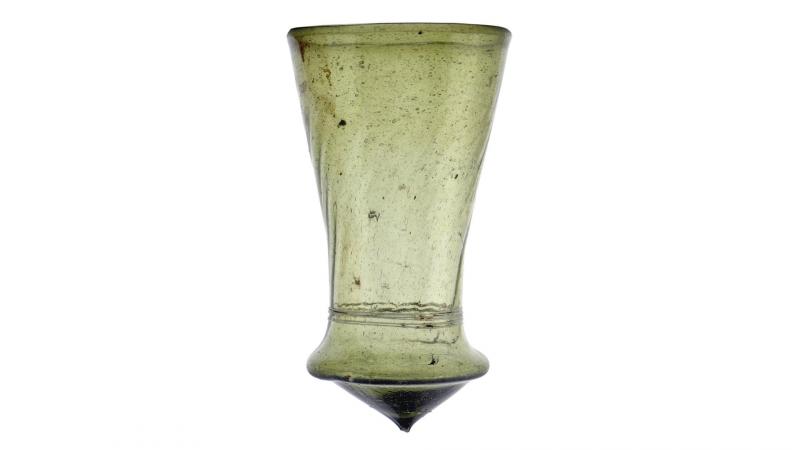Many archaeological finds have been made in areas that were formerly used by brick factories. In the early 1920s, in Dilsen, Belgian Limburg, workers on a farm located in a place called "Leymveld" discovered two iron axes, two complete ceramics and a glass from the Merovingian period. The artefacts were handed over to the owner of the brickyard, the knight, Moreau de Bellaing, who was also the mayor. From this isolated discovery, only this glass-covered goblet became part of the collections of the Liège Archaeological Institute. Probably produced in Champagne between 530 and 570 AD, it culminates in a terminal point and not a foot. As it could not stand upright, one had to hold the glass or empty it in one go to be able to put it on its side or turn it over. Legless goblets could serve as hanging lamps, as with the Mediterranean models.
Numéro d'inventaire FLORA
GC.ARC.01d.1923.50870
